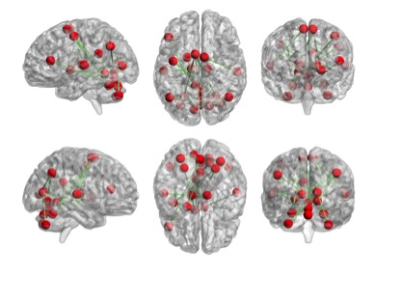3160
Altered small-world, functional brain networks in patients with postherpetic neuralgia
jian jiang1 and yanwei miao1
1The first affiliated hospital of Dalian medical university, Dalian, China
1The first affiliated hospital of Dalian medical university, Dalian, China
Synopsis
This study investigated the link between PHN and the small-world properties of functional networks within the brain.
Purpose
In this study, we aimed to investigate the functional network changes that occur in patients with postherpetic neuralgia (PHN). We also investigated the link between PHN and the small-world properties of functional networks within the brain.Methods
Functional MRI (fMRI) was performed on 20 individuals with PHN and 30 age, gender and the severity of the pain-matched patients with lower back pain (LBP) during the resting state. Network-based statistics were performed to investigate the differences between the brain networks of individuals with PHN and LBP. Several small-world parameters of brain networks were calculated, including the clustering coefficient, characteristic path length, local efficiency, and global efficiency. These criteria reflect the overall network efficiency.Results
The brain networks in the individuals with LBP due to herniation of a lumbar disc demonstrated a significantly longer characteristic path length as well as a higher clustering coefficient, global efficiency, and local efficiency compared to those PHN (p<0.001).Conclusion
We found that PHN patients tended to have stable and efficient brain networks when compared with LBP. The brain networks of the LBP group demonstrated significantly longer characteristic path length, which lead to the slower information processing in the brains of those with LBP compared to PHN (Figure 1) .Acknowledgements
PHN may be linked to certain brain regions. However, changes in brain functional connectivity caused by PHN have not been assessed. In our study, we used the small-world network, graph theoretical approach to look for potential changes in brain functional connect.References
1. Achard, S., and Bullmore, E. (2007). Efficiency and cost of economical brain functional networks. PLoS Comput Biol 3, e17.
2. Apkarian, A.V., Bushnell, M.C., Treede, R.D., and Zubieta, J.K. (2005). Human brain mechanisms of pain perception and regulation in health and disease. Eur J Pain 9, 463.
3. Cauda, F., Sacco, K., Duca, S., Cocito, D., D’Agata, F., Geminiani, G.C., and Canavero, S. (2009). Altered resting state in diabetic neuropathic pain. PLoS ONE 4, e4542.
